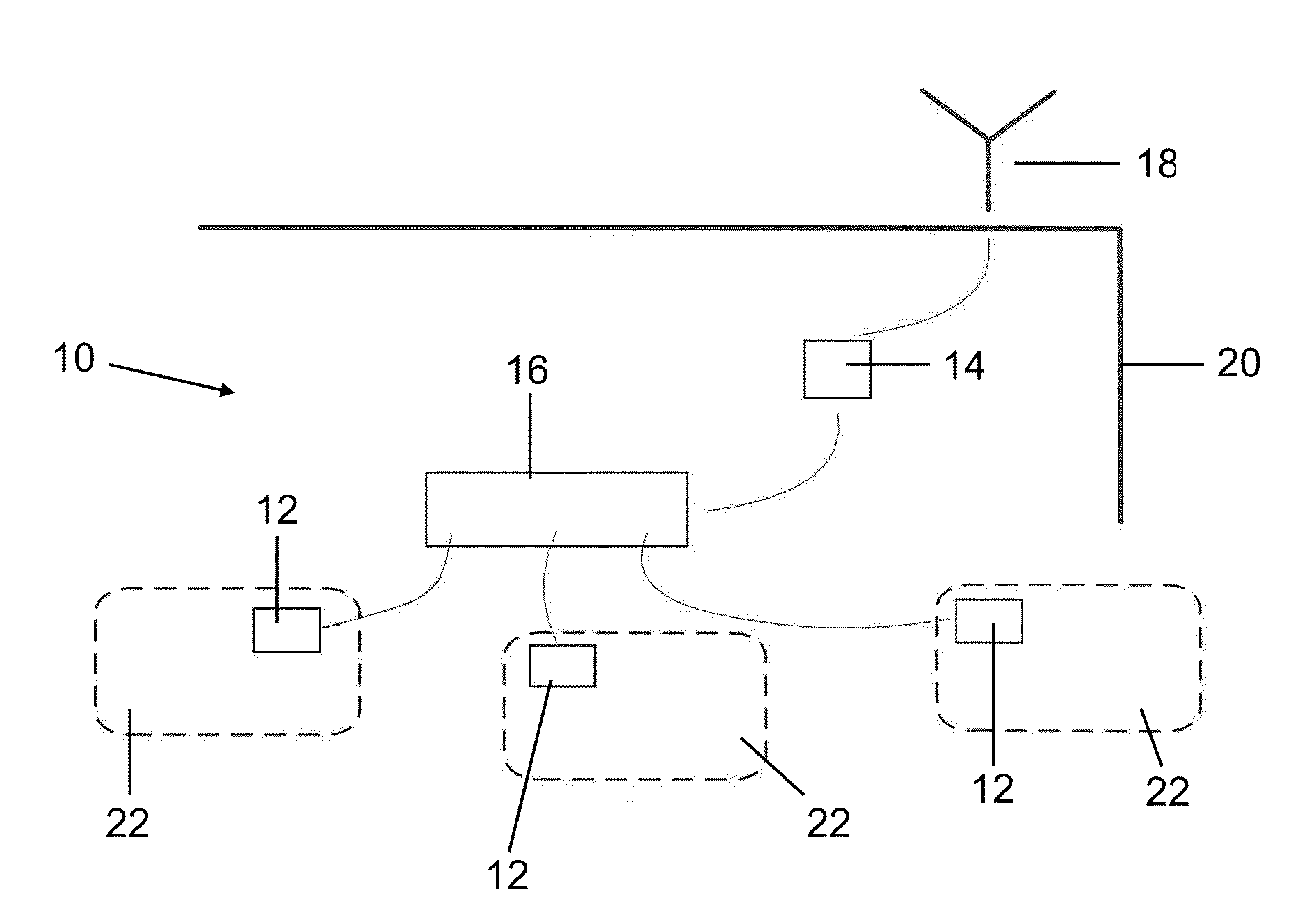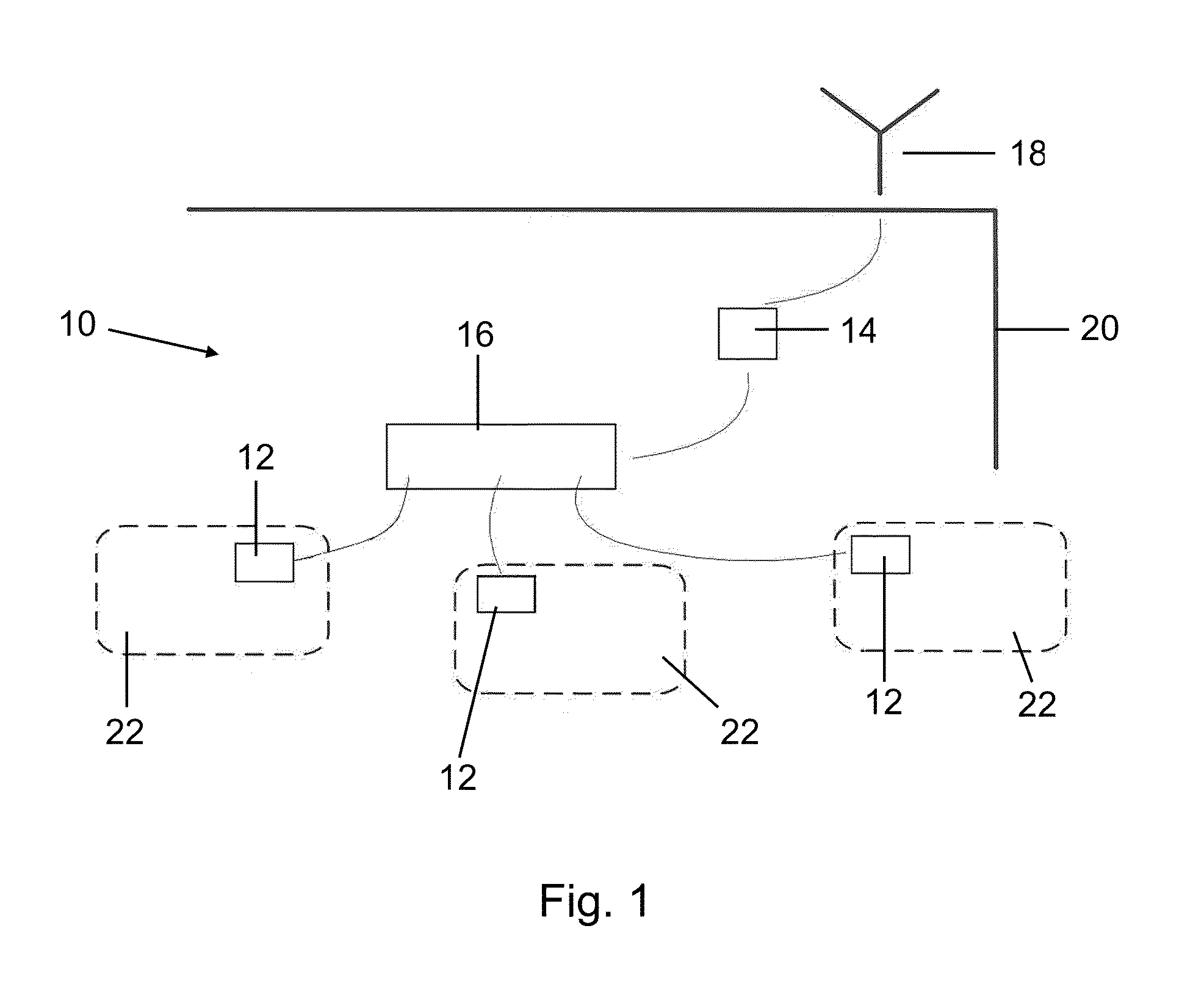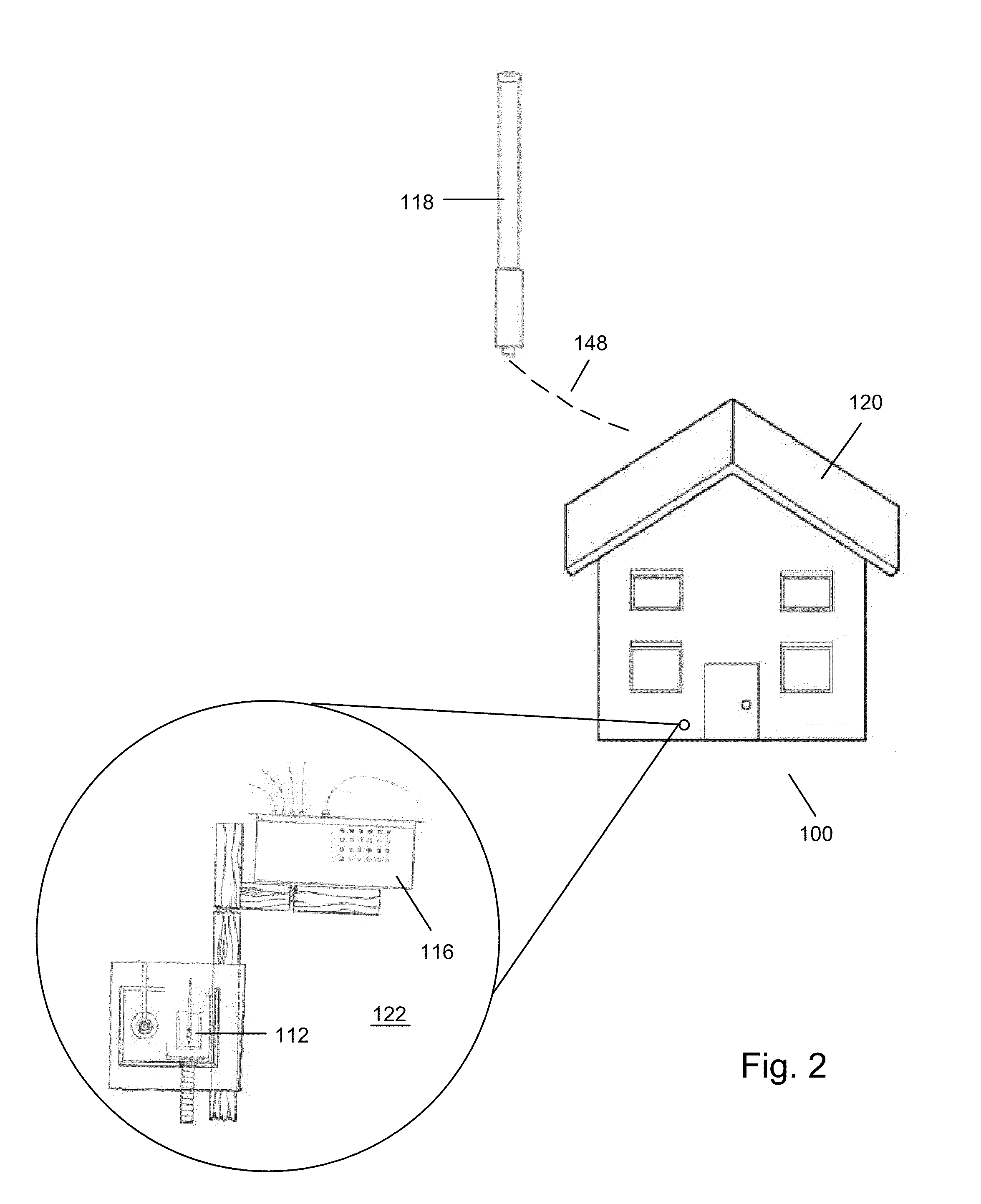Method and Apparatus for Providing Wireless Communications Within a Building
a wireless communication and building technology, applied in the direction of selective content distribution, data switching networks, wireless commuication services, etc., can solve the problems of obstructing and interference with wireless signals, wireless signals to fade, and inability to work well with wireless communication within buildings
- Summary
- Abstract
- Description
- Claims
- Application Information
AI Technical Summary
Benefits of technology
Problems solved by technology
Method used
Image
Examples
Embodiment Construction
[0049]FIG. 1 shows the overall basic architecture of a wireless distribution secured cabling system 10. The wireless distribution secured cabling system not only supports cellular service provider communications, but also supports other wireless technologies such as local area wireless networks, including networks governed by IEEE 802.11 Wireless LANs. As seen in FIG. 1, the wireless distribution secured cabling system 10 includes faceplates 12, each of which contains an antenna or other radiating element and an active amplifier 14, which serves as a bi-directional repeater for the wireless communication system. The system further includes a patch panel or distribution module 16 which connects multiple cables, which may be either twisted pair or coaxial, to amplifier 14, acting as a power divider and / or an impedance matching device.
[0050]Antenna 18, which may be mounted either outside of a building structure 20 or inside the building structure, is provided. An antenna 18 provides co...
PUM
 Login to View More
Login to View More Abstract
Description
Claims
Application Information
 Login to View More
Login to View More - R&D
- Intellectual Property
- Life Sciences
- Materials
- Tech Scout
- Unparalleled Data Quality
- Higher Quality Content
- 60% Fewer Hallucinations
Browse by: Latest US Patents, China's latest patents, Technical Efficacy Thesaurus, Application Domain, Technology Topic, Popular Technical Reports.
© 2025 PatSnap. All rights reserved.Legal|Privacy policy|Modern Slavery Act Transparency Statement|Sitemap|About US| Contact US: help@patsnap.com



